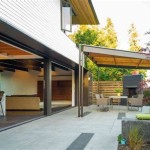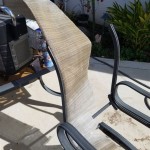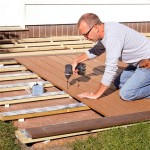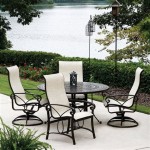How To Remove Green Algae From Patio Slabs
Green algae growth on patio slabs is a common problem, particularly in damp, shaded areas. These unsightly green or black patches not only detract from the appearance of the patio but can also make the surface slippery and hazardous. Effectively removing algae requires a multi-pronged approach that combines cleaning and preventative measures.
1. Identifying and Understanding Algae Growth
Before tackling algae, it's helpful to understand its nature. Algae thrive in moist, nutrient-rich environments. Factors such as shade, poor drainage, and overhanging trees contribute to algae growth. The black or dark green discoloration often seen on patios isn't strictly algae itself, but rather a biofilm composed of algae, fungi, and bacteria. This biofilm can become deeply embedded in the porous surface of paving slabs, making removal more challenging. Identifying the extent and location of the algae helps determine the appropriate cleaning methods.
Different types of paving slabs require different approaches. Natural stone, concrete, and composite materials each possess varying levels of porosity and sensitivity to cleaning agents. Knowing the type of patio material is crucial for selecting cleaning solutions that are effective yet safe for the surface.
2. Effective Algae Removal Methods
Several methods prove effective for removing algae from patio slabs. The best approach often involves a combination of techniques, depending on the severity of the algae growth and the type of paving material. Regular cleaning is always advisable to prevent the build-up of stubborn biofilms.
Pressure Washing:
This method uses a high-pressure water jet to blast away algae and other surface debris. It's particularly effective for removing loose algae but may not be suitable for all patio materials, as it can damage softer stone or loosen pointing in between the slabs. Always test in an inconspicuous area first. Lower pressure settings are generally recommended for delicate surfaces.Chemical Cleaning:
Specialized algae removal products are available in most garden centers. These cleaners typically contain active ingredients that break down and kill algae. When using chemical cleaners, always follow the manufacturer’s instructions carefully. Protective gloves and eyewear should be worn. It’s important to thoroughly rinse the patio after cleaning to remove any residual chemicals. Environmentally friendly alternatives, such as bleach solutions (diluted bleach and water) or vinegar solutions (white vinegar and water), can also be effective, although they may require longer application times.Scrubbing and Brushing:
For smaller areas or less severe algae growth, scrubbing with a stiff-bristled brush and a cleaning solution can be sufficient. A dedicated patio brush or a deck brush works well. This method allows for targeted cleaning and avoids the potential risks associated with pressure washing or strong chemical cleaners.3. Preventing Algae Regrowth
Removing algae is only half the battle; preventing regrowth is crucial for long-term patio maintenance. Several preventative measures can be implemented to minimize the recurrence of algae.
Improving Drainage:
Standing water provides an ideal breeding ground for algae. Ensuring adequate drainage can significantly reduce algae growth. This can be achieved by sloping the patio surface away from buildings or by addressing any underlying drainage issues.Trimming Overhanging Vegetation:
Overhanging trees and shrubs create damp, shaded conditions favorable for algae growth. Regular trimming and pruning can improve air circulation and sunlight penetration, inhibiting algae development.Regular Cleaning:
Regular sweeping and occasional washing of the patio surface can help prevent the accumulation of organic matter and moisture, thereby deterring algae growth. A routine cleaning schedule, particularly during the wetter months, can significantly minimize the need for more intensive cleaning methods later on.Applying Algae Preventative Treatments:
Certain products are designed to inhibit algae growth. These treatments are typically applied after cleaning and create a protective barrier that prevents algae from taking hold. Always follow product instructions carefully.By understanding the factors that contribute to algae growth and employing a combination of effective removal and preventative strategies, maintaining a clean and algae-free patio is achievable.

Hg Algae And Mould Remover

Best Tips On Cleaning Patio Slabs How To Get Rid Of Algae

How Do I Remove Green Algae From My Patio Stoneworld Oxfordshire

Best Tips On Cleaning Patio Slabs How To Get Rid Of Algae

Remove Algae And Lichen Off Patio Pavers Like Rick Wet Forget Blog

How To Stop Green Mould And Algae From Growing On Your Patio Pro Kleen

My Patio Slabs Were Covered In Green Algae I Cleaned Them 10 Minutes With An Buy No Pressure Washer Needed The Sun

How To Clean Green Algae Off Patio Tiles Easily

Patio Turning Green How To Fight Algae

How To Clean Your Patio And Kill Moss Red
See Also








